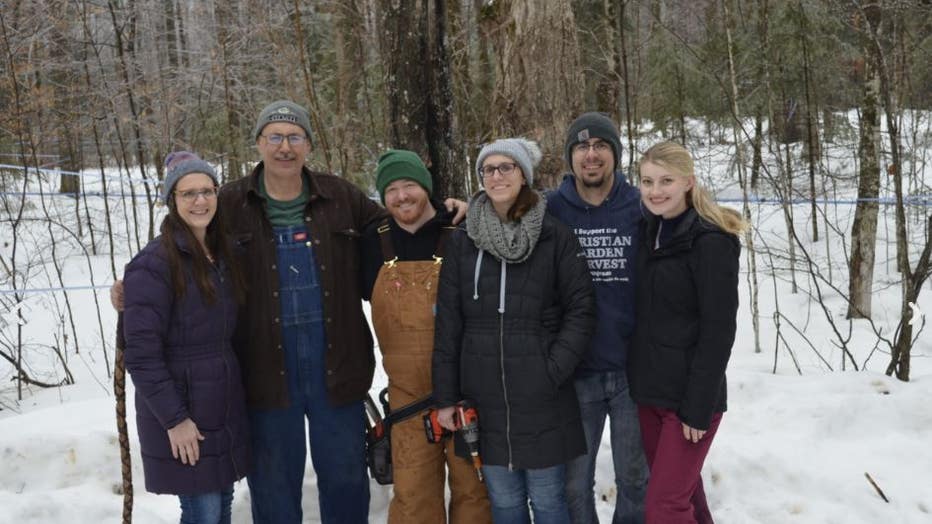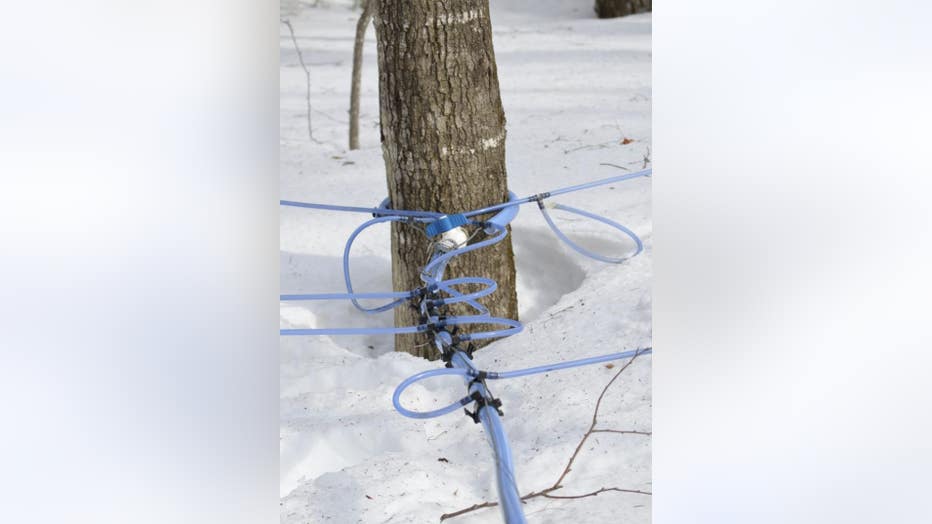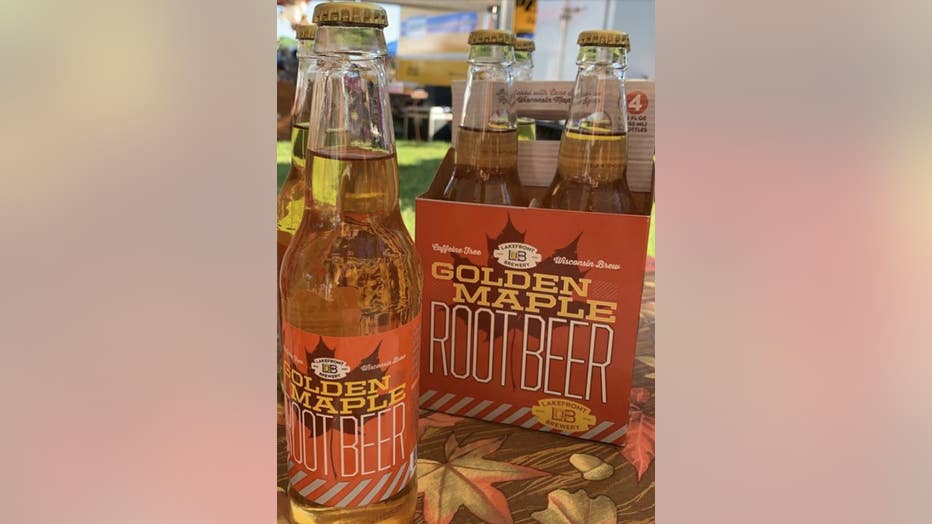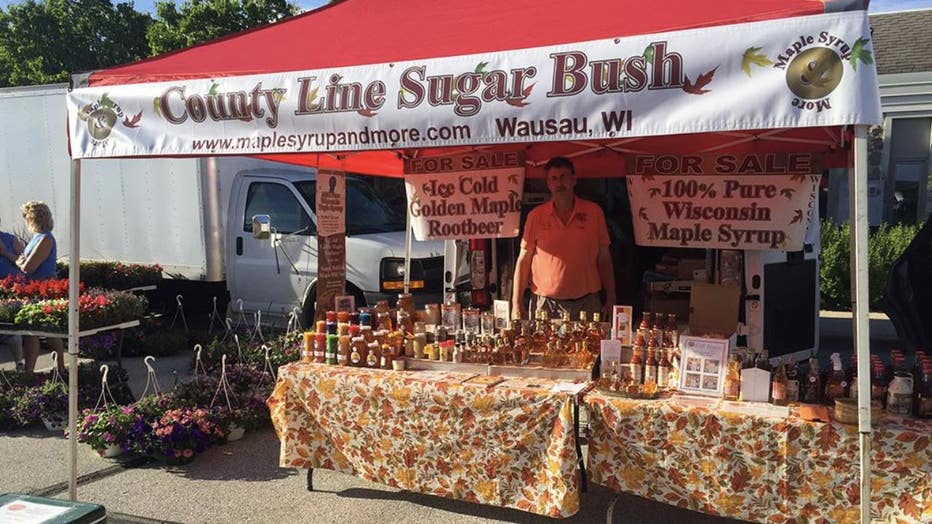Making maple syrup; Wisconsin tapper explains how it's done

How to make syrup; the business of tapping trees
Wisconsinites enjoy local beers, brats, and cheese, but we also enjoy fresh maple syrup. Meteorologist Lisa Michaels had the chance to chat with local maple tree farmer, Tom Ollhoff, and owner of County Line Sugar Bush in Wausau, to talk about the tapping industry and how weather impacts it.
MILWAUKEE - Wisconsinites enjoy local beers, brats, and cheese, but we also enjoy fresh maple syrup.
Meteorologist Lisa Michaels had the chance to chat with local maple tree farmer, Tom Ollhoff, and owner of County Line Sugar Bush in Wausau, to talk about the tapping industry and how weather impacts it.

Courtesy: Tom Ollhoff
The history
The backstory:
There is a deep history of how Country Line Sugar Bush came to be that dates back to 1887 when Tom's grandfather acquired land with maple trees.
In the 1930s, his family cooked tree syrup to use as a sugar base. Tom's father took possession of the land in 1953.
In 1966, at the young age of 6 years old, Tom started cooking syrup with his dad.

Courtesy: Tom Ollhoff
Initially, Tom and his dad only made syrup for the family, but Tom eventually expanded their maple tapping farm into a family business.
The land was eventually passed down to Tom in 1990, where he continues the family business to this day.
How does the process work?
What we know:
The roots of the trees store sugar. Through capillary action, the roots bring up the water which mixes with the sugar that runs up the tree.
Maple trees need to be about 10" in diameter, which is about 70 years old, in order to tap. Maple tapping isn't for the weak, it's a labor-intensive job.
According to Tom, an angled hole is drilled about 1.5" deep and bags or bins positioned outside the tree collect the sap.
To increase sap production, a vacuum can be used instead to pull more sap from the capillaries in the tree to make more maple syrup.
This method does not hurt the tree. The same trees are tapped every year, but the tapping hole is in a different location, so the capillaries aren't cut in the same place.
For example, one year the tapping hole will be on the north side, then the following year on the south side, east side, and west side.
It takes several years to go back to the same side of the tree again.
What is a normal day like?
What we know:
During tapping season, Tom wakes up and heads to the woods between 2 a.m. to 4 a.m. to start the reverse osmosis process in order to squeeze the sap.
This helps concentrate the sap by separating the water from the sugar, which reduces the amount of boiling time to produce maple syrup. From 8 a.m. to 9 a.m., they are ready to start cooking the sap on a wood fire to help thicken the sap into maple syrup.

Courtesy: Tom Ollhoff
When is tapping season?
What we know:
Maple tapping season has changed tremendously over the years, according to Tom.
When he tapped with his dad as a young boy, they didn’t tap the trees until April and cooked in early May.
When Tom took the woods over in 1990, he started tapping during the third week of March.
They would cook about 25% of the crop in March and 75% of the crop in April.

Courtesy: Tom Ollhoff
As the 2025 season progresses, with a pipeline tapping network in place, they are tapping from the end of February into the first part of March, producing 50% of the crop, and 50% in the month of April.
The pipeline is a network of tubing used to collect and transport maple sap from trees to a specific collection point.
Every year 1,500 trees are tapped on their property that produce 700 to 800 gallons of syrup.
The different types of maple syrup
Depending on the time of the year trees are tapped, various grades of maple syrup are produced.
Earlier in the season, the lighter the syrup is in color, and the more delicate the taste is to eat.

(Photo Credit: International Maple Syrup Institute)
Later in the season, the darker the syrup is, which has a strong taste typically used for cooking or baking, so other ingredients don't overpower the flavor.
Maple types include: Golden(early season), Amber(middle season), Dark(late season), and Very Dark(late season).
This uniform grading system was adopted by the maple belt about 10 years ago.
Does the weather impact tapping?
What we know:
Of course, it does! From the fall of 2024 heading into the spring of 2025, Wisconsin dealt with drought conditions.
Droughts impact the trees before tapping season, when winter is about to begin.
Back in the 1990s, a local farmer told Tom that you have to watch how much rain comes in August. If it is a rainy August, there typically is a weak season to come, meaning the sugar content is low in the sap and less syrup is produced.

If it's a sunny and dry August, there typically is a sweeter season to come, meaning the sugar content is high in the sap and more syrup is produced. Tom started tracking this every year and noticed that the farmer was correct 17 out of the 21 years, which is 81% of the time.
Some tappers think that a higher amount of sunlight allows the tree leaves to undergo more photosynthesis, allowing additional sugar to be stored between August and early September.
The tree stores sugar before it freezes in winter. Even though the early season is in March, the temperatures have to be just right. It has to freeze at night, then get into the upper 30s to low 40s during the day to get the tree sap to run.
In 2025, the sap didn't run from the trees since the frost was so deep, and it caused the root system to freeze. To unfreeze the roots, warm rain was needed to thaw that top layer of the ground to get the root system to run and draw up sap. Needless to say, Tom constantly analyzes the temperatures, precipitation, and frost depth. This is a form of farming.
From farm to table
What we know:
Tom and his family travel great distances across the state to allow Wisconsinites to grab hold of their various products.
They attend farmers' markets on the weekend and are in 38 store locations in the Milwaukee area.
Year round, Lakefront Brewery sells non-alcoholic Golden Maple Root Beet that sources the maple syrup from County Line Sugar Bush.

Visit their website to see when they will be at a local market near you.

The Source: This story was produced by the FOX6 Weather Experts. Additional information provided by the International Maple Syrup Institute.


